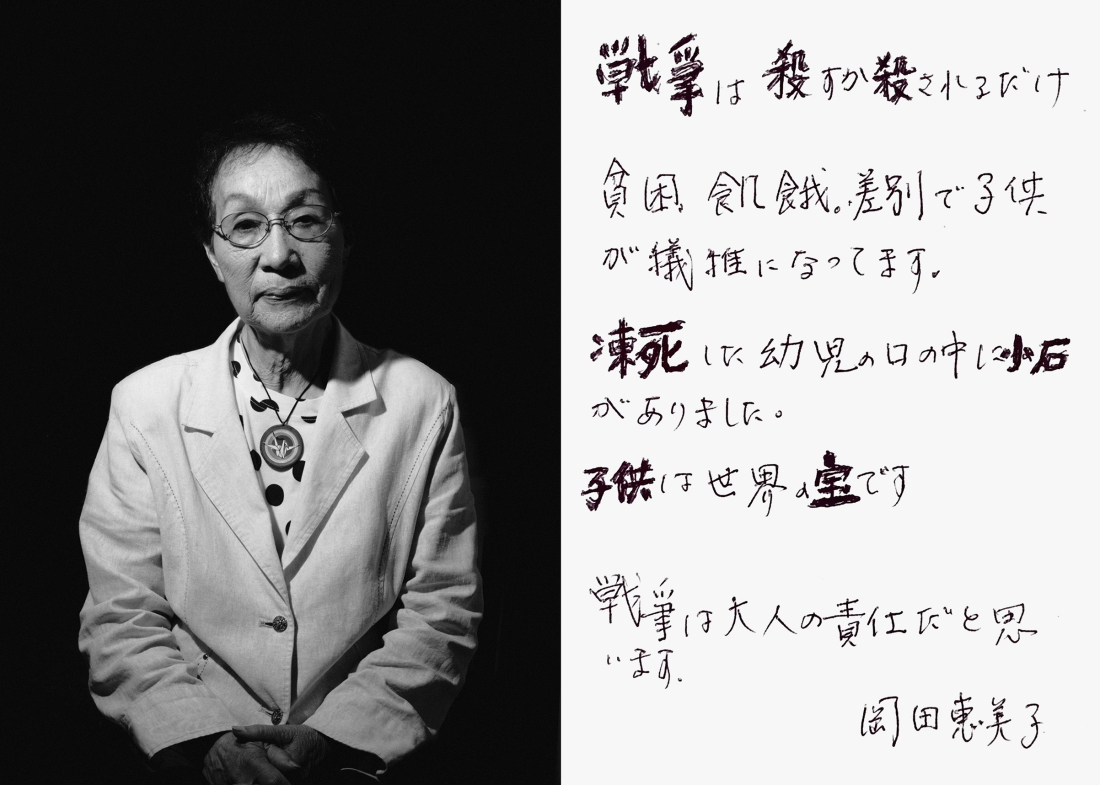“I was eight when the bomb dropped. My older sister was 12. She left early that morning to work on a tatemono sokai (building demolition) site and never came home. My parents searched for her for months and months. They never found her remains. My parents refused to send an obituary notice until the day that they died, in hopes that she was healthy and alive somewhere, somehow.
I too was affected by the radiation and vomited profusely after the bomb attack.
My hair fell out, my gums bled, and I was too ill to attend school. My grandmother lamented the suffering of her children and grandchildren and prayed. “How cruel, how so very cruel, if only it weren’t for the pika-don (the phonetic name for the atomic bomb)…” This was a stock phrase of hers until the day that she died.” – Emiko Okada, Survivor of Hiroshima Bombing.

Today, 6th August is observed as Hiroshima Day and 9th August as Nagasaki Day, when Japan faced two devastating nuclear bombs. This day commemorates the remembrance of the bombing attack on Hiroshima and Nagasaki and the end of the Second World War. The day promotes peace politics against brutal wars. 6th August 2020 is the 75th year of the atomic bombing. Physically it took a decade to clear the destruction and rebuild the city. To this day, however, people are trying to revive themselves from the mental trauma striding past the atrocities they saw and experienced.
Japan is considered the first modern Non-European country to match the European societies in terms of living, industrialisation and technology. It is one of the topmost country well-known for its extraordinary human resource formation with an exponential economic and technological growth. Japan is also known for its honest self-appraisal as a country in power for which the vital reasoning was the end of national isolation imposed by Tokugawa Shogunate when the United States sent Commodore Perry for the reopening of foreign Trade after nearly 220 years of “Sakoku.”
The Dutch were the only traders allowed in Japan even after Sakoku. Through them, the Japanese acquired western information. “Dutch learning” or “rangaku” was introduced. These included explosives, guns, weapons, astronomy, maps and surveying and a Bureau of Astronomy was opened in the Japanese government department where the Dutch books were translated to Japanese
September 27, 1940, Japan entered World war 2 by signing the tripartite pact with Germany and Italy. However, it wasn’t until the Pearl Harbour attack that the USA entered the conflict. Historians perceive many political explanations behind the attack of Pearl Harbour.
Japan was on its way to global expansion for which the USA was countering by enacting economic sanctions against Japan including trade prohibitions on oil, scrap metal, aircraft exports, etc. This movement only strengthened Japan’s ground and in need of natural resources to nourish power in the Pacific, Japan attacked Pearl Harbour.
Japan was angered with the Western interference in Asian affairs for a long time. When the Nanban Trades (trading with Dutch, Spanish, British and Portuguese) was ongoing Japan crucified nearly 300,000 Christian for alleged blame of providing weaponry to the rebellions of the government. This was long back in 1600 after which the Sakoku was imposed. As aforementioned, when the USA sent Perry with the demands of reopening the Trading system, Japan had to do it again.
These two scenarios, however, do not hold much historical justification but have a way of formation of a trail that repelled the Japanese from foreign invasion due to the undulating history of the two countries.
In May 1940, USA made Pearl Harbour a major base for its Pacific Fleet. As Americans didn’t expect Japan to attack the Harbour most of it was left undefended.
“Admiral Yamamoto Isoroku spent months planning an attack that aimed to destroy the Pacific Fleet and destroy morale in the U.S. Navy so that it would not be able to fight back as Japanese forces began to advance on targets across the South Pacific.”- Sarah Pruitt, History. com
Japan’s surprise raid on the Pearl Habour led to the United States to enter the conflict with hastening the victory of Allies and the surrendering of Japan with two of the most devastating atomic bombings- Hiroshima and Nagasaki.
A mushroom-like cloud billows in the sky one hour after the dropping of the Bomb Enola gay detonating above Hiroshima. Nearly 80000 people were killed almost immediately with another 60000 dying of injuries and exposure to radiation by 1950.
Hiroshima station between 1912-1945. A normal day filled with the hustle-bustle of life.
Hiroshima station after 1945 bombing. A normal day after 1945 filled with injured people and dilapidated buildings.
Survivors of the first atomic bomb waiting for treatment, Hiroshima 1945.
This building, once known as Hiroshima Prefectural Industrial Promotion Hall, has now been transformed into the Hiroshima Peace Memorial.
To this day, the bombing of Hiroshima and Nagasaki reverberates the cruelty of power. Power can be conquered- but the lives lost cannot be returned. When the world shifts to almost on the brink of another war, these stories and memorials are the only last hope of clutching us away from another trail of brutality and suffering.
Around 50000 citizens from Japan and Dignitaries and ambassadors from 70 countries visit Hiroshima Memorial on 6th August to console the spirit of those killed in the bombings and to pray for the lasting world peace.
After the war ends, the normalcy of life ebbs away with it, leaving people with too many scars ending the possibility to be normal again.
“I ask younger people to never forget us and to understand the tragedy, absurdity and cruelty of the war so that nuclear weapons will be eliminated from the world as soon as possible.”- Lee Jong Keun of Bombing.
[zombify_post]